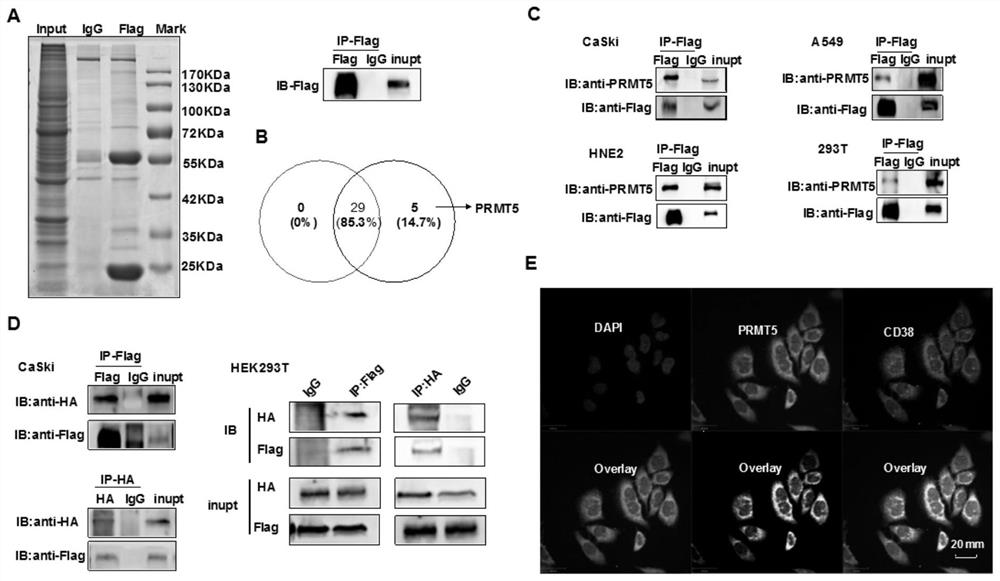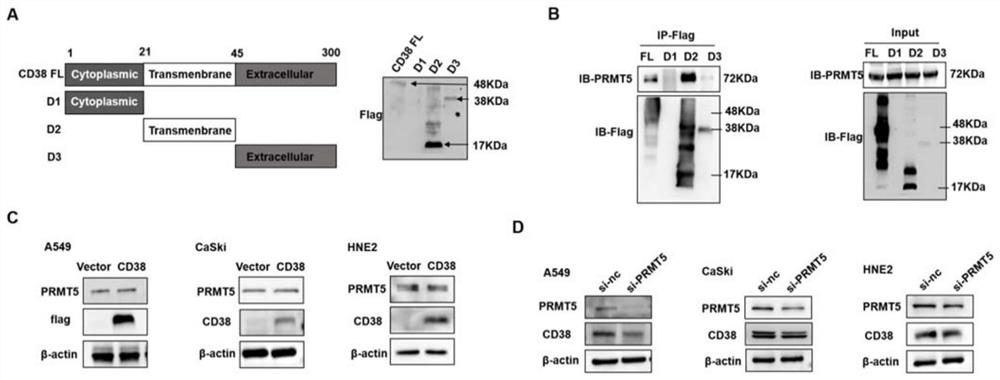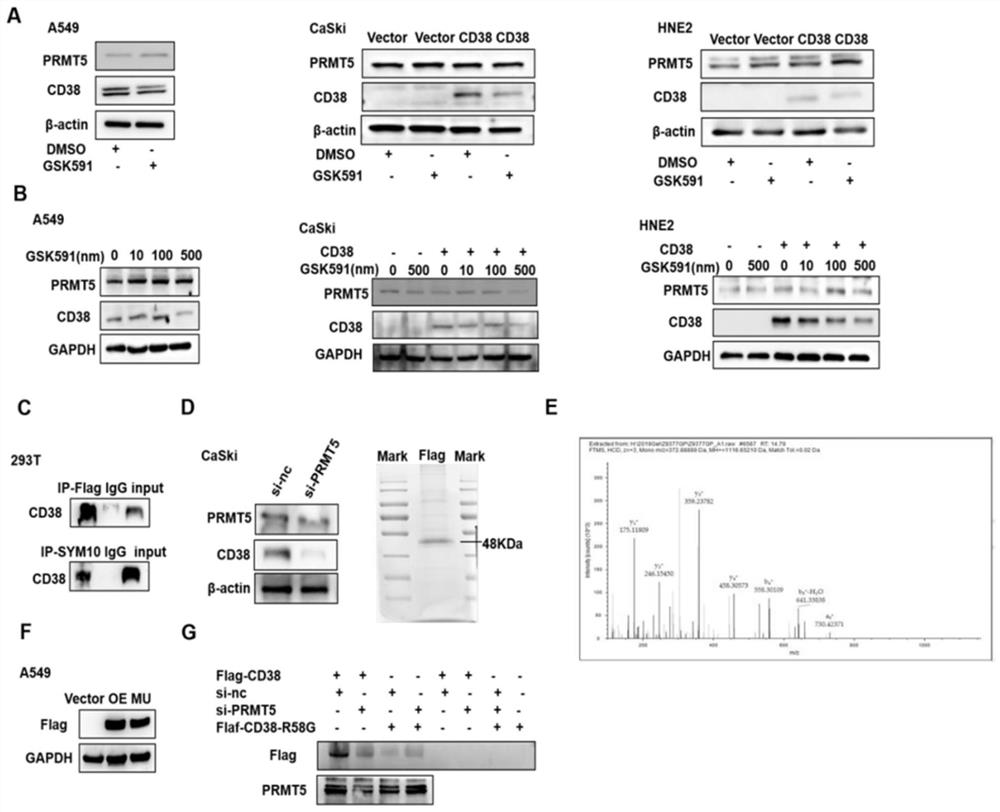Target spot for treating tumor, application of target spot and tumor treatment preparation
A preparation and tumor technology, applied in the field of anti-tumor drug development and treatment, can solve problems such as protein interaction and its biological significance that have not been reported.
- Summary
- Abstract
- Description
- Claims
- Application Information
AI Technical Summary
Problems solved by technology
Method used
Image
Examples
Embodiment 1
[0076] figure 1 A is the SDS-PAGE electrophoresis staining image of CD38 immunoprecipitation complex; cervical cancer CaSki cells stably expressing Flag-CD38 were cultured in 1640 medium containing 10% fetal bovine serum, cell extracts were prepared after 48 hours, and anti-Flag parent Use it with gel beads to precipitate Flag-CD38 and proteins that interact with CD38, and take an appropriate amount of protein as a positive control, and divide the remaining protein into two equal parts to incubate with IgG and Flag affinity gel beads, and then remove An appropriate amount of Western technology was used to identify whether Flag-CD38 was enriched. In order to identify and identify protein purification, the obtained protein was separated by SDS-acrylamide gel electrophoresis, and then decolorized after staining with Coomassie. It was found that an obvious difference band appeared at the 72kDa position. Western blot experiments showed that Flag-CD38 was successfully enriched.
...
Embodiment 2
[0089] figure 2 A is the different truncated regions of CD38: as a transmembrane protein, CD38 is composed of intracellular domain, transmembrane domain and extracellular domain, so CD38 is divided into three segments, namely D1 (intracellular segment), D2 (transmembrane segment), D3 (extracellular segment), constructed as a vector with Flag and fused to express Flag. Transiently transfer the full length of Flag-CD38, Flag-D1, Flag-D2, and Flag-D3 into 293T cells, collect the cell lysate after 48 hours, and verify whether the construction of the three-segment domain is successful by using western blot experiments. The intracellular, transmembrane and extracellular domains of CD38 protein have been successfully constructed.
[0090] Full-length Flag-CD38: It represents the CD38 carrier with Flag, and the full-length amino acids of CD38 are as follows
[0091] MANCEFSPVSGDKPCCRLSRRAQLCLGVSILVLILVVVLAVVVPRWRQQWSGPGTTKRFPETVLARCVKYTEIHPEMRHVDCQSVWDAFKGAFISKHPCNITEEDYQPLMKLGTQTV...
Embodiment 3
[0105] image 3 A is western blot detection of CD38 protein levels after treatment with GSK591 (inhibiting PRMT5 methylation function): in CaSki, HNE2 cell lines, and A549 cells stably overexpressing CD38, using GSK591 (PRMT5 inhibitor) and DMSO treatment, found The protein level of CD38 was also significantly down-regulated after the methylation activity of PRMT5 was inhibited.
[0106] image 3 B is western blot detection of CD38 protein levels after treatment with different concentrations of GSK591 (inhibiting PRMT5 methylation function): In CaSki, HNE2 cell lines, and A549 cells stably overexpressing CD38, different concentrations of GSK591 (PRMT5 inhibitor) were used And DMSO treatment, the CD38 protein level decreased with the increase of GSK591 concentration, and the CD38 protein level decreased most obviously when the concentration was 500nM.
[0107] image 3 C is the detection of symmetrical arginine dimethylation of CD38 by co-immunoprecipitation technique: the f...
PUM
 Login to View More
Login to View More Abstract
Description
Claims
Application Information
 Login to View More
Login to View More - R&D
- Intellectual Property
- Life Sciences
- Materials
- Tech Scout
- Unparalleled Data Quality
- Higher Quality Content
- 60% Fewer Hallucinations
Browse by: Latest US Patents, China's latest patents, Technical Efficacy Thesaurus, Application Domain, Technology Topic, Popular Technical Reports.
© 2025 PatSnap. All rights reserved.Legal|Privacy policy|Modern Slavery Act Transparency Statement|Sitemap|About US| Contact US: help@patsnap.com



